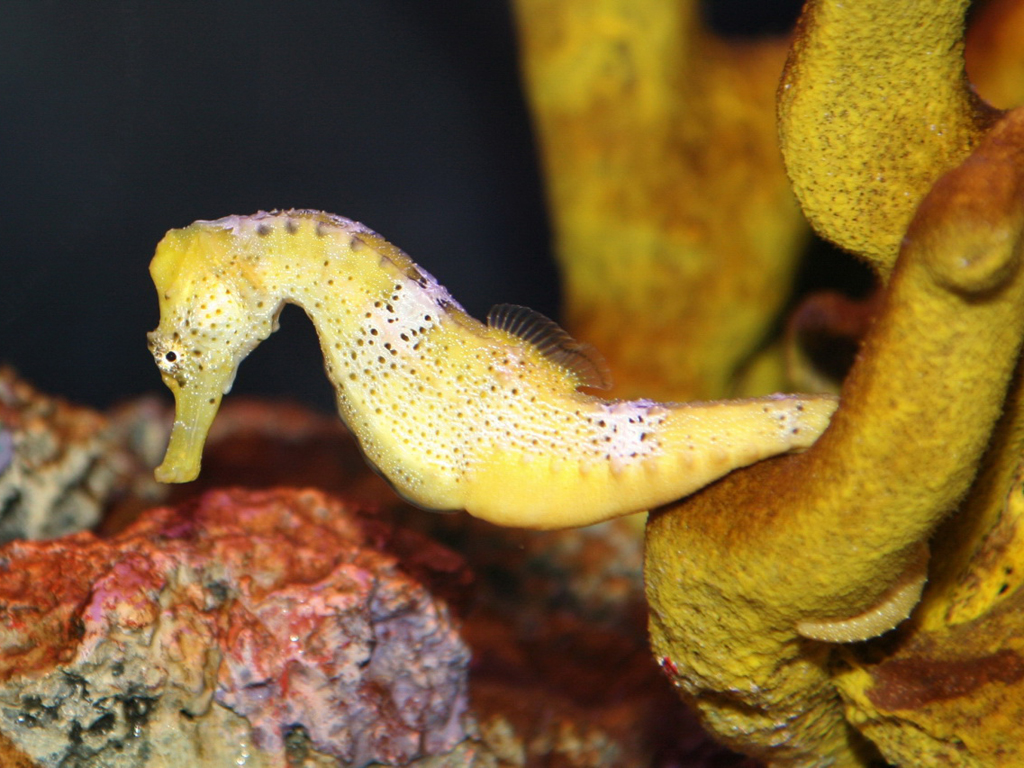Slender Seahorse
Hippocampus reidi

The male becomes pregnant
Among slender seahorses, just like other seahorses, it is the male that gets pregnant. Before spawning, the two seahorses go through a long and complicated courting. The male changes colour and dances vividly in front of the female to impress her. He also shows her his pouch, in which he wants her to lay her eggs. When two partners find each other, they dance together for a long time before it is time for the actual spawning.
Movie: Mating dance between two Slender Seahorses
The female lays her eggs through a tube into the male’s pouch. After about two weeks the fry hatch and are ejected by the male; sometimes there are as many as 1,500 fry. The fry look like perfect miniatures of adult seahorses. Almost immediately after giving birth, the male is ready to accept new eggs from the female. A seahorse male often remains with the same female throughout his entire life.
Movie: A male Slender Seahorse gives birth
Looks like a creature from a fairy tale
When sailors sold seahorses back in the day, they used to say that the creatures were small, fire-breathing dragons. And don’t you think that the seahorse looks like a creature from a fairy tale, where it swims among the corals? Despite its appearance, the seahorse is actually a fish! But it lacks scales; instead, the body is covered by a kind of bony plates, like armour.
The slender seahorse is, like most other seahorses, threatened by human activity. This is partly because they are being caught for the aquarium trade, partly because they are being used in traditional medicine.

Photo: Cliff-CC-BY
Bad swimmer
The slender seahorse is also known as the longsnout seahorse. They are often yellow or orange in colour but can change colour depending on their environment and mood. They swim very slowly, so in order not to be eaten, they depend on camouflage to blend into their surroundings. They spend a lot of time hanging by their tail from a coral or a piece of seaweed, where they eat zooplankton that float by. The slender seahorse has no teeth; instead, it opens its mouth and sucks the prey in very quickly when it comes too close.
Distribution worldwide

The American Atlantic coast to the West Indies and Brazil.
White marking = Distribution
Threat based on the Red List

Trade regulations
CITES: B-listed.